10 Predators That Eat Birds: An Overview
Last Updated on
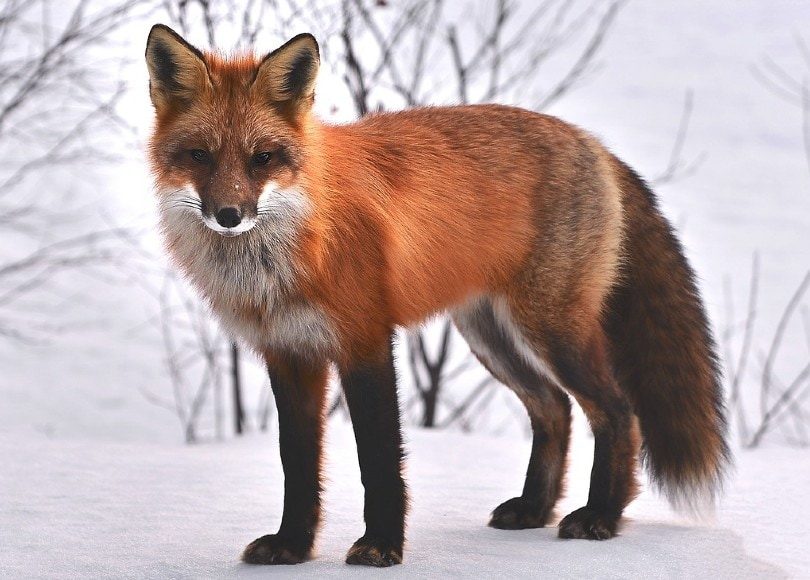
Birds are some of the most beautiful creatures on Earth. The fluttering of their wings and the chirping create a remarkable presence. However, their existence in the wild can be cut short by predators.
But as wonderful as birds are, they possess an indisputable weakness — their penchant for being caught by predators. Usually, these predators will kill birds for food. The birds depend on their ability to fly for protection because of their small size. But, that doesn’t stop predators from preying on them.
Of the various bird predators, how many of them do you know? Birds fall prey to many kinds of animals from small mammals, raptors to reptiles. In this article, we’ll look at the ten most prevalent predators that eat birds. Let’s jump right in!

The 10 Predators That Eat Birds
1. Cats
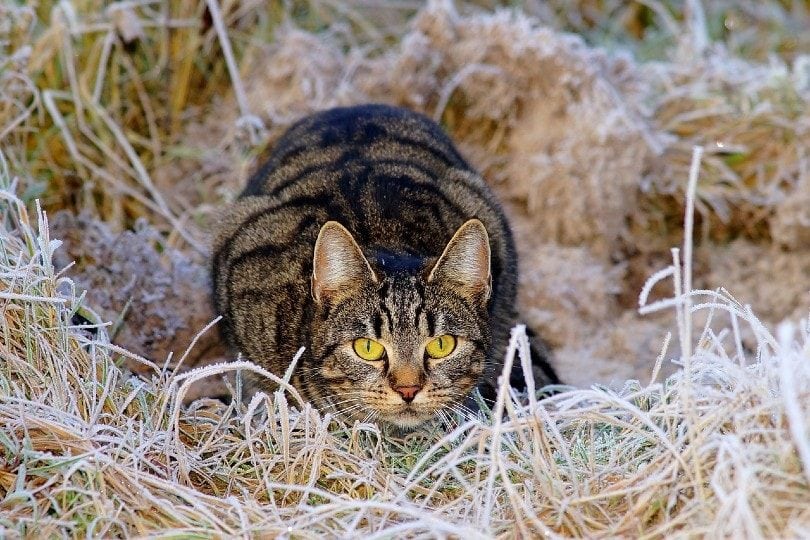
| Diet: | Carnivore |
| Distribution: | Globally |
| Type of Animal: | Domesticated mammal |
Unfortunately, cats are some of the most feared bird predators. They’re stealthy, agile, and have sharp claws and teeth. They are voracious hunters who take any opportunity to chase a bird.
Laura from Pango Pets says that cats can be deadly in urban areas where they find abundant prey. But they also hunt on the edges of parks and forests. They hunt birds for food, as well as for sport. The problem is that they are efficient hunters. Keeping your cat indoors is the best way to prevent them from preying on backyard birds.
2. Coyotes

| Diet: | Omnivore |
| Distribution: | Northern America |
| Type of Animal: | Mammal (Primates) |
Coyotes attack and kill many different types of animals including birds (especially chickens, guinea fowl, roadrunners, pigeons, robins, and doves).
A coyote will approach its prey slowly, ensuring its victim does not notice. Once it’s within striking distance, the coyote will bite its prey at the neck and kill it instantly.
While coyotes don’t usually hunt in packs, they will often work together to attack their prey. They are also known to eat just about anything they can get their paws on. It includes many varieties of birds and eggs, rodents, and other small mammals.
Coyotes use their long thin legs to run at high speeds. Their sharp eyesight allows them to spot birds from far away before pouncing.
3. Baboons

| Diet: | Omnivore |
| Distribution: | Arabian Peninsula and Africa |
| Type of Animal: | Mammal (Primates) |
Baboons are large terrestrial monkeys found in Africa and southwestern Asia. They have long, dog-like snouts, thick fur, powerful bodies, and long tails. They are omnivorous, but they will eat a variety of foods including fruits, seeds, nuts, roots, grasses, and insects. They also prey on birds, lizards, and small mammals.
Baboons are often seen in groups and will attack smaller animals together. However, they don’t attack birds like a cat or a dog would. Instead, they wait for them to weaken before killing them. This way, the bird is easier to catch.
There are five baboon species that prey on birds. These species include olive, hamadryas, Guinea, yellow, and chacma baboons.
4. Snakes
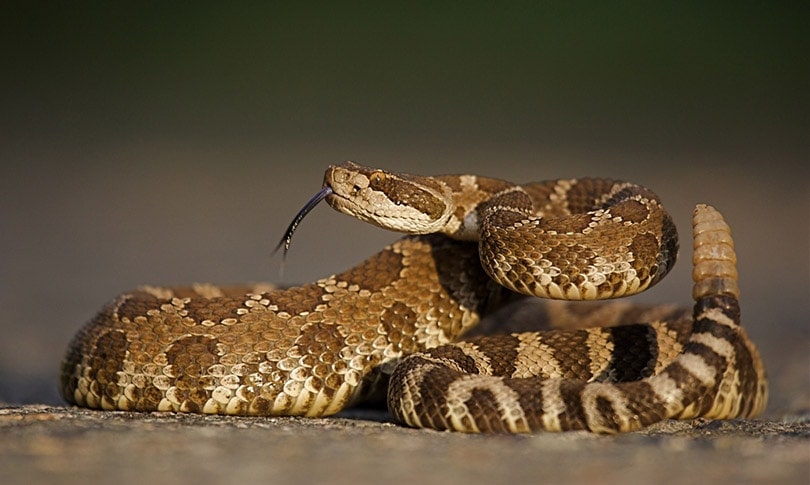
| Diet: | Omnivore |
| Distribution: | Globally except New Zealand, Hawaii, and Ireland |
| Type of Animal: | Reptiles |
Snakes are a common predator of birds. Most snakes that prey on birds are arboreal, meaning they live in trees. Other ground dwellers like rattlesnakes, king snakes, corn snakes, and copperheads will eat birds, too. They strike fast to kill their prey with a bite from their fangs. This bite injects venom into the victim’s body. The venom immobilizes the victim, and then the snake digests its prey.
Most snakes do not eat adult birds. They prefer eggs or chicks. However, constrictors like pythons and boas will squeeze an adult bird to death and swallow it whole. Unfortunately, no birds are safe from snakes. Even the common garter snake will eat small birds and eggs if they can.
5. Snow Foxes
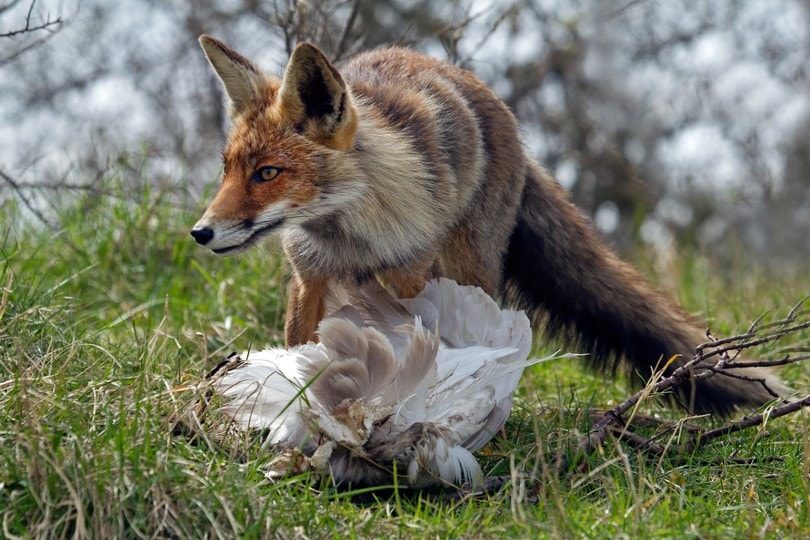
| Diet: | Omnivore |
| Distribution: | Tundra regions (Northernmost areas of Asia, Greenland, Europe, North America, and Ireland |
| Type of Animal: | Mammal |
The snow fox (Vulpes Lagopus) is the only species of fox that lives in the Arctic. They are found in the snowy regions of North America, Europe, and Asia. It’s one of the few species of mammals that thrive in this environment.
They have white fur for camouflage in the snowy landscape, large furry paws for walking on snow, short ears and a short muzzle to reduce heat loss, and thick fur around their necks for protection against biting winds.
Snow Foxes have been known to hunt small mammals like rabbits, squirrels, and mice. They also hunt birds. They raid bird nests for eggs and small hatchlings.
When hunting for birds, Snow Foxes will lie down on their stomachs waiting for the prey to approach before pouncing on it with its sharp claws and powerful teeth when the bird gets close enough.
6. Raccoons

| Diet: | Omnivore |
| Distribution: | Northern America |
| Type of Animal: | Mammal ( Rodents) |
Raccoons are the most widely distributed carnivore in the United States. They live in different habitats such as forests, marshes, and urban areas. They are omnivorous animals whose diet includes a wide variety of foods like fruits, eggs, vegetables, and insects. They also feed on meat from small animals such as chickens, rabbits, and rodents.
Like foxes, raccoons are also a common bird predator in urban areas. They can find food sources like garbage cans and bird feeders to supplement their diet with leftovers from human meals.
Raccoons are nocturnal creatures as they usually hunt at night. They will scavenge on dead birds. But they also hunt small to medium-sized live birds. They are notorious for killing game birds such as quail and pheasant. But they also eat songbirds and waterfowl.
7. Squirrels

| Diet: | Omnivore |
| Distribution: | Europe and Northern America |
| Type of Animal: | Mammal ( Rodents) |
Squirrels are not large predators but they are tough enough to take down a bird. This small rodent is an omnivore. It means it eats both plants and animals. They have strong front teeth and forelimbs that enable them to climb trees, dig holes in the ground, and attack prey. Their sharp claws also aid in digging and climbing.
Usually, red squirrels are the number one predator of eggs and nestlings in forests. They may even raid nests while the birds are still building them. The red squirrel’s larger cousin, the gray squirrel, has a similar effect on nests in urban areas.
Gray squirrels are more likely to eat birds that are already dead than catch them themselves though.
8. Humans
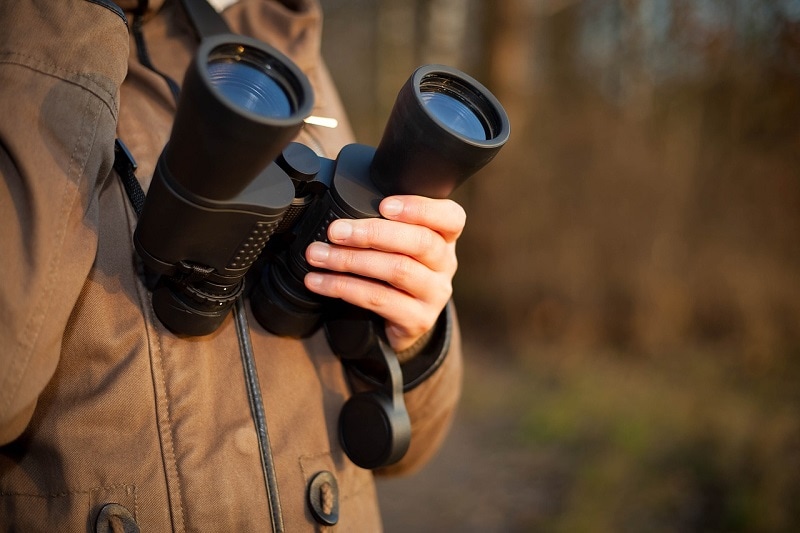
| Diet: | Omnivore |
| Distribution: | Worldwide |
| Type of Animal: | Mammal (Primates) |
Humans are undoubtedly the greatest predator of birds on Earth. We hunt birds for food, sport, and medicine. We also collect them as trophies and keep them as pets.
Humans also kill some birds accidentally. Think about when we destroy their habitats and pollute their environments. Many bird populations around the world have been devastated by humans in the process. Birds can fly into buildings and power lines while migrating or looking for food.
Many bird species are facing extinction because of human activity. We must protect bird species. This way, natural ecosystems can remain balanced for future generations to enjoy.
9. Falcons

| Diet: | Carnivore |
| Distribution: | Globally apart from Antarctica |
| Type of Animal: | Bird |
Falcons are birds of prey. It means they hunt and eat other animals such as smaller birds, mammals, and reptiles. They have excellent eyesight and can see a small bird from over half a mile away. They also have keen hearing. They can pick up the high-pitched sounds that birds make.
They have long tails that act as rudders when flying at high speed. Their wings are long and pointed. It helps them soar through the air easily when hunting their prey.
While some hunt for food in groups, most falcons are solitary hunters. They have curved beaks for tearing flesh and sharp talons for catching and holding onto prey. They will catch their prey by diving at it in a steep arc called a stoop.
10. Bats
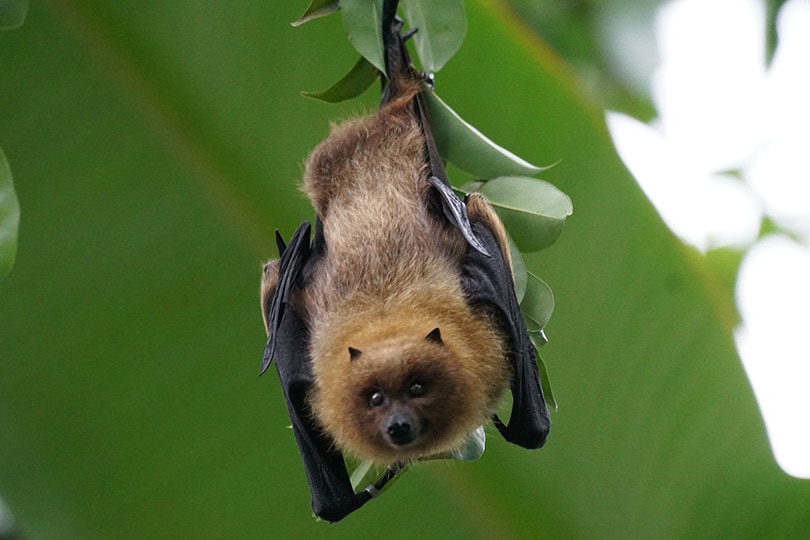
| Diet: | Omnivore |
| Distribution: | Every part of the globe apart from Antarctica and the Arctic |
| Type of Animal: | Flying mammal |
Bats are one of the most unique animals on the planet. Not only can they fly, but they also have specialized hunting skills that none of the other predators on this list have. They are not always thought of as a predator, but they are. They are nocturnal and feed on insects and small rodents. If a bird is flying at night, it can be a target for a hungry bat!
Some bats can use echolocation to find their prey in the dark. They may not seem like a threat to birds because they’re smaller than most bird species. But these tiny creatures can be deadly hunters.
Most of them hunt at night and stalk their prey rather than flying into it like a bird would do. They will hang out in trees or tree branches until an unsuspecting bird is within striking distance. Then, they swoop down, grab their prey with their claws, and fly away with it.

What Birds are Most at Risk of Predation?
The most vulnerable birds are those that nest on the ground. They include quail, grouse, terns, plovers, and shorebirds. These birds are often found in open habitats where there are few places to hide from predators.
Many ground-nesting birds have cryptic coloration. It helps them blend in with their surroundings. Others rely on an “exploded” nest where the eggs are hidden separately from each other. Some nest in colonies for protection, while others nest in dense vegetation or under tree roots.
Birds that nest in cavities such as woodpeckers are less vulnerable to predation. It’s because they lay their eggs inside holes that can be challenging for predators to reach without being injured.
Birds that lay their eggs high in trees also escape many predators because it is difficult for predators to climb up into the branches. But these birds may have other predators such as hawks, owls, and snakes. They can climb into the trees or fly up to catch the adults or nestlings.
•Can You Hunt Pythons in Florida? Do You Need a License?

Conclusion
Birds play a role in maintaining the balance of our ecosystem. But they have many predators. Most of them can fly away to avoid trouble. But a few avian species are not so lucky. So, they must make with evasive actions or hiding places to avoid becoming part of their predator’s next meal.
Although birds possess various adaptations for safety, there are many predators that birds need to watch out for. They not only make life hard for birds, but some predators even kill and feed on them.
Featured Image Credit: Alain Audet, Pixabay
About the Author Robert Sparks
Robert’s obsession with all things optical started early in life, when his optician father would bring home prototypes for Robert to play with. Nowadays, Robert is dedicated to helping others find the right optics for their needs. His hobbies include astronomy, astrophysics, and model building. Originally from Newark, NJ, he resides in Santa Fe, New Mexico, where the nighttime skies are filled with glittering stars.
Related Articles:
10 Types of Hummingbirds in Arkansas (With Pictures)
8 Types of Hummingbirds in Nebraska (With Pictures)
5 Types of Hummingbirds in Idaho (With Pictures)
3 Types of Hummingbirds in Mississippi (With Pictures)
8 Types of Hummingbirds in Kansas (With Pictures)
5 Types of Hummingbirds in West Virginia (With Pictures)
5 Types of Hummingbirds in Ohio (With Pictures)
Where Do Nuthatches Nest? Nuthatch Nesting Habits Explained
